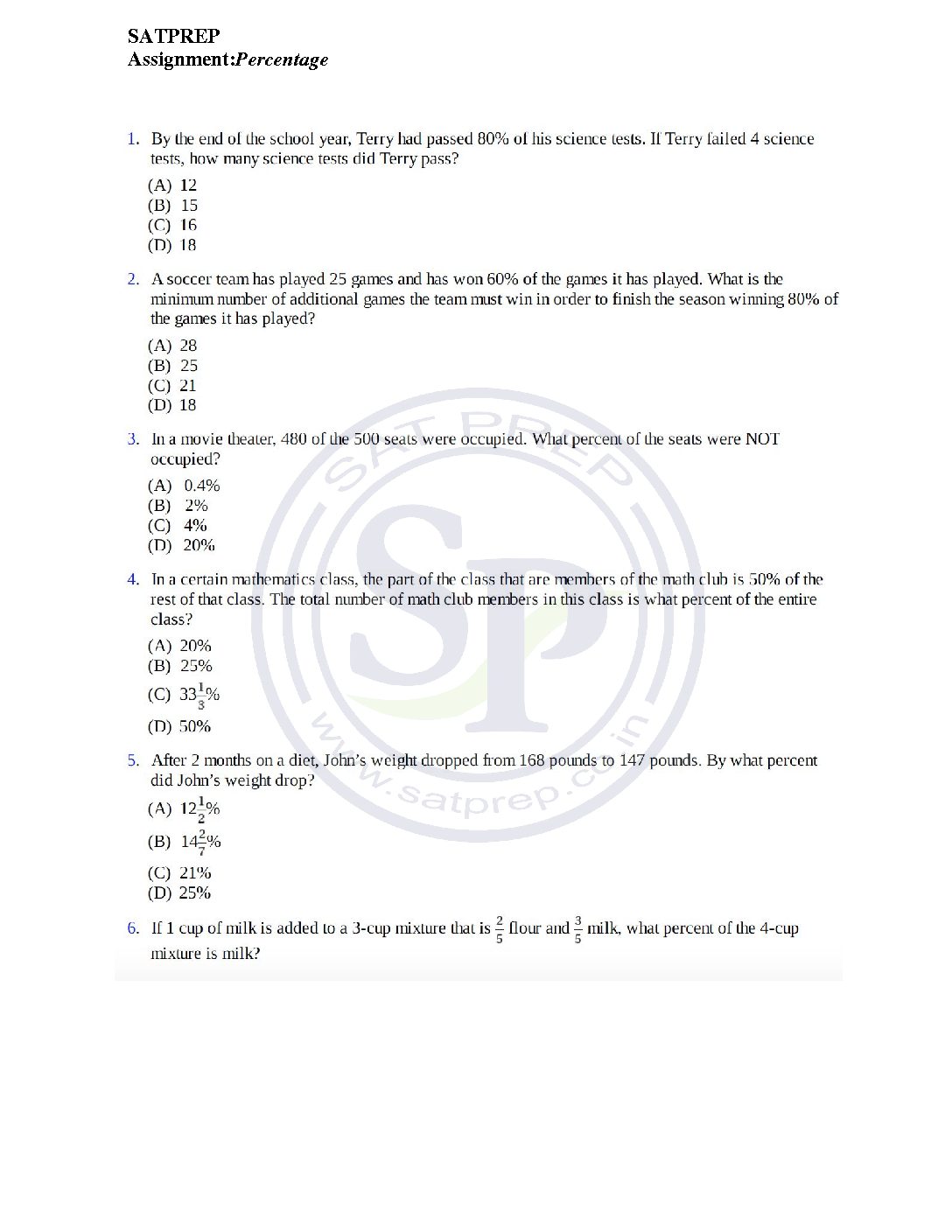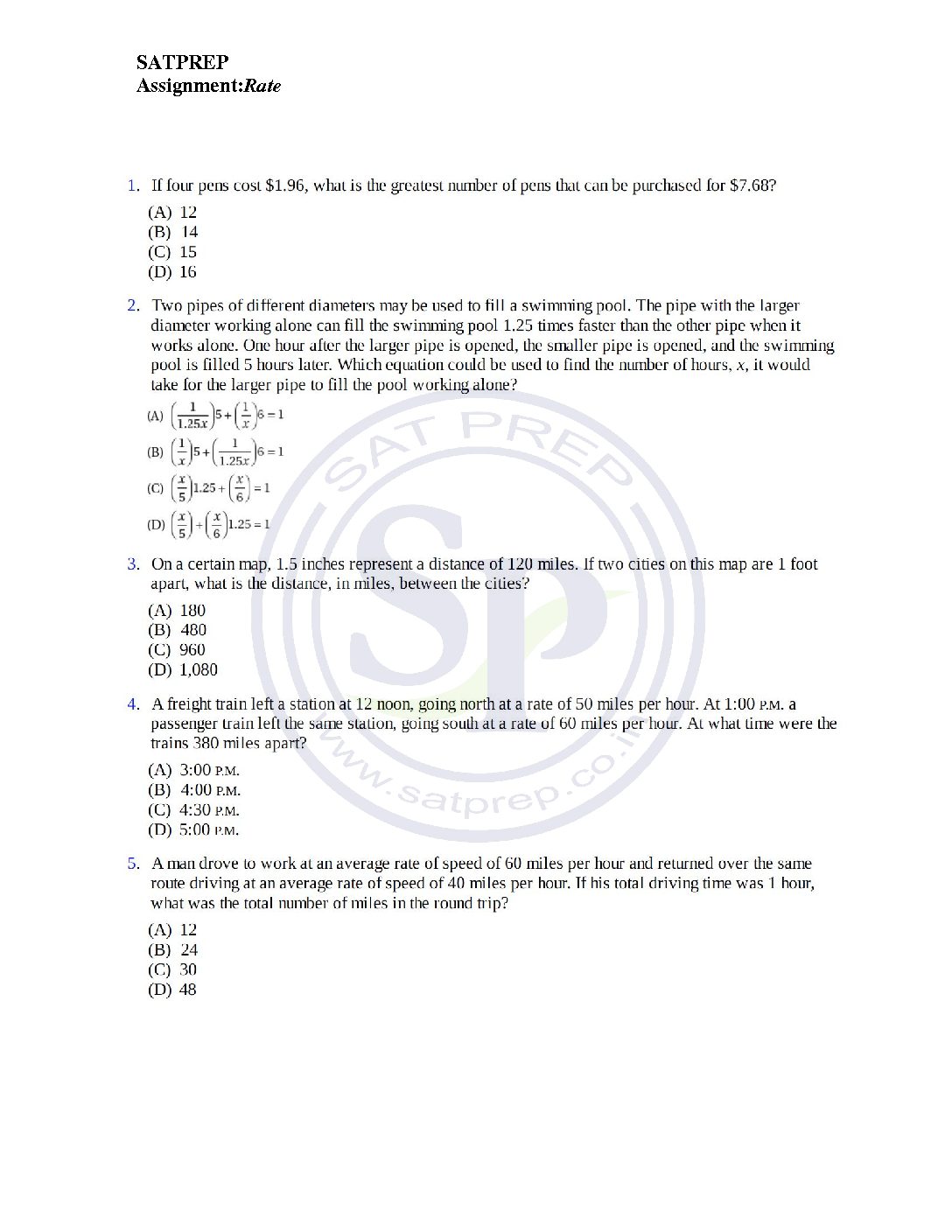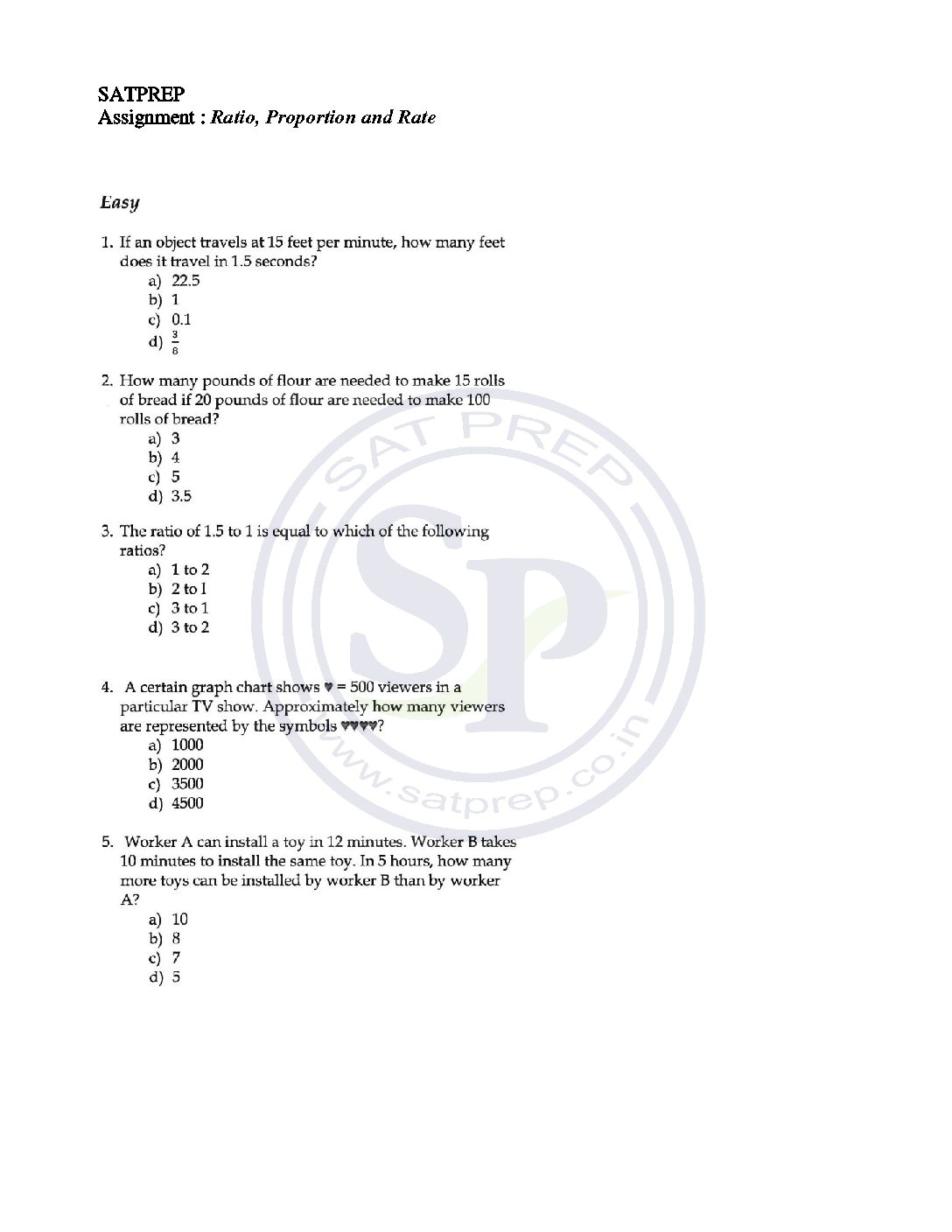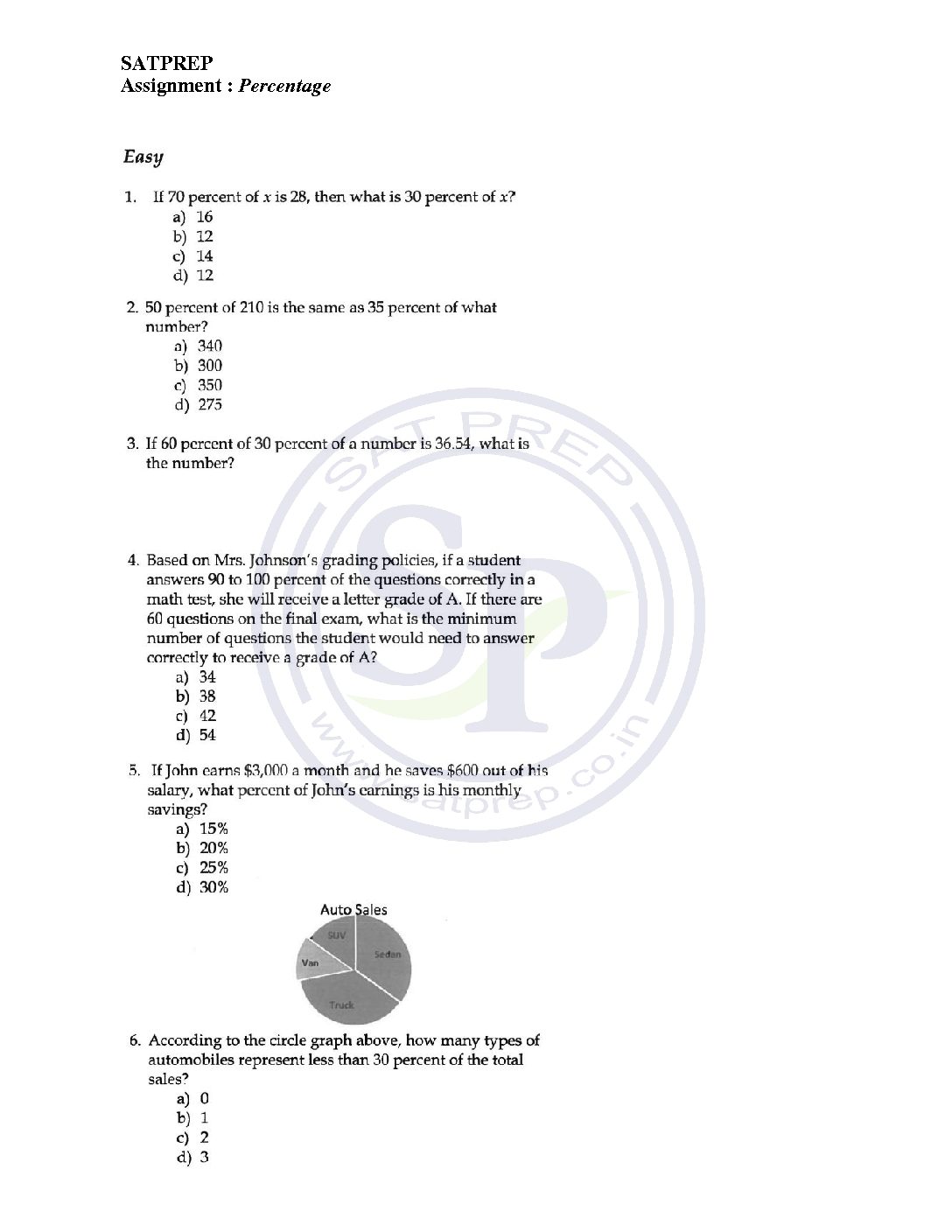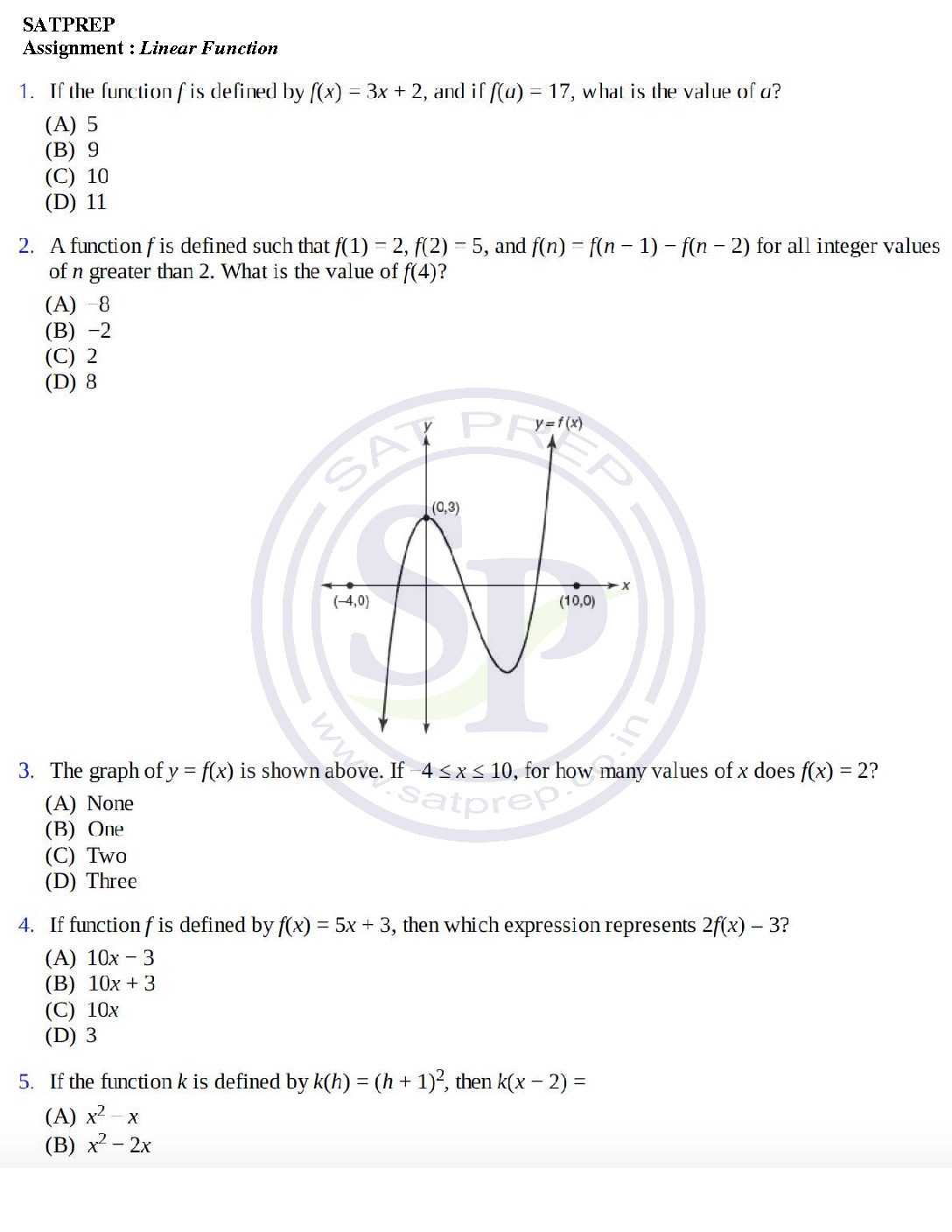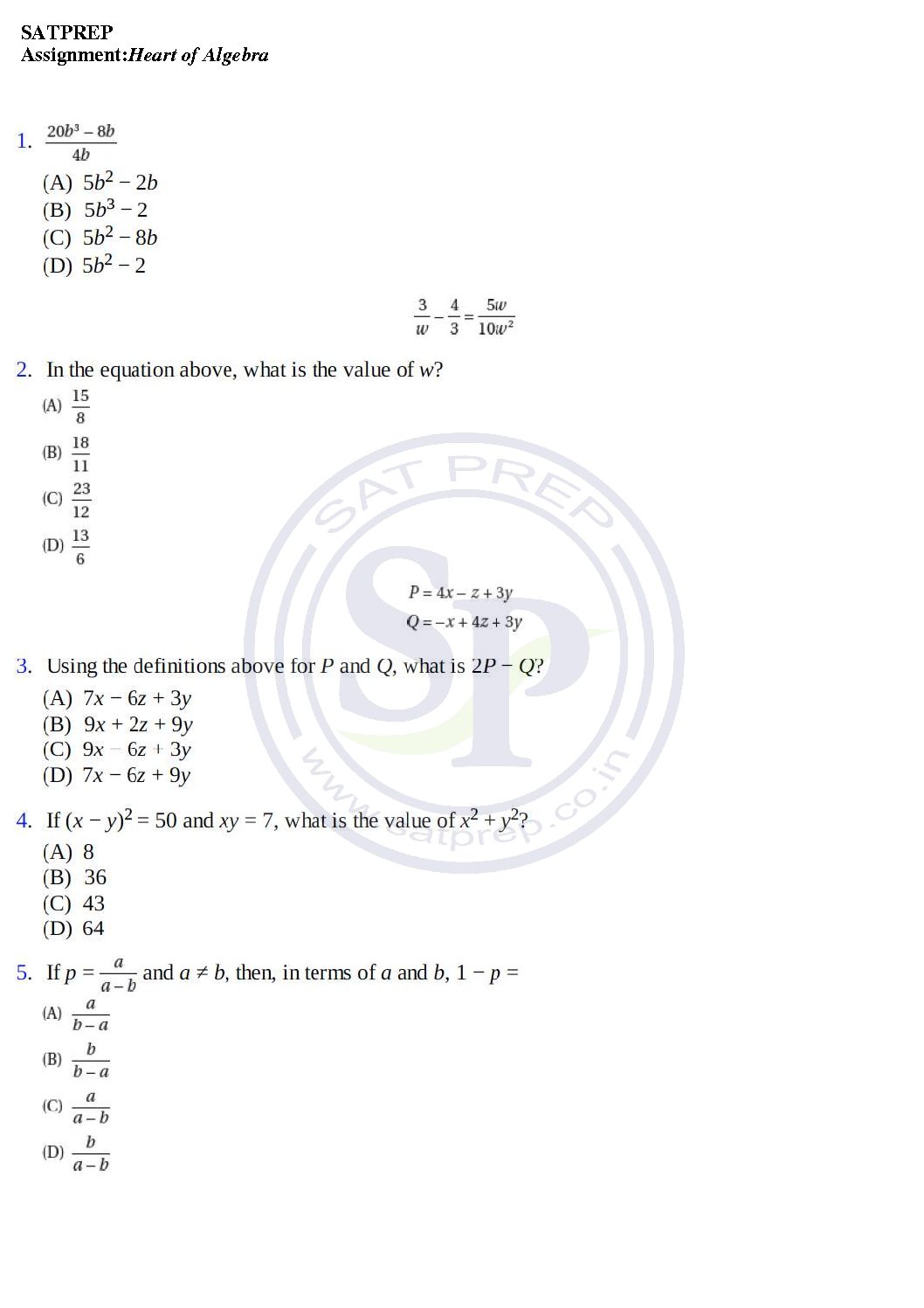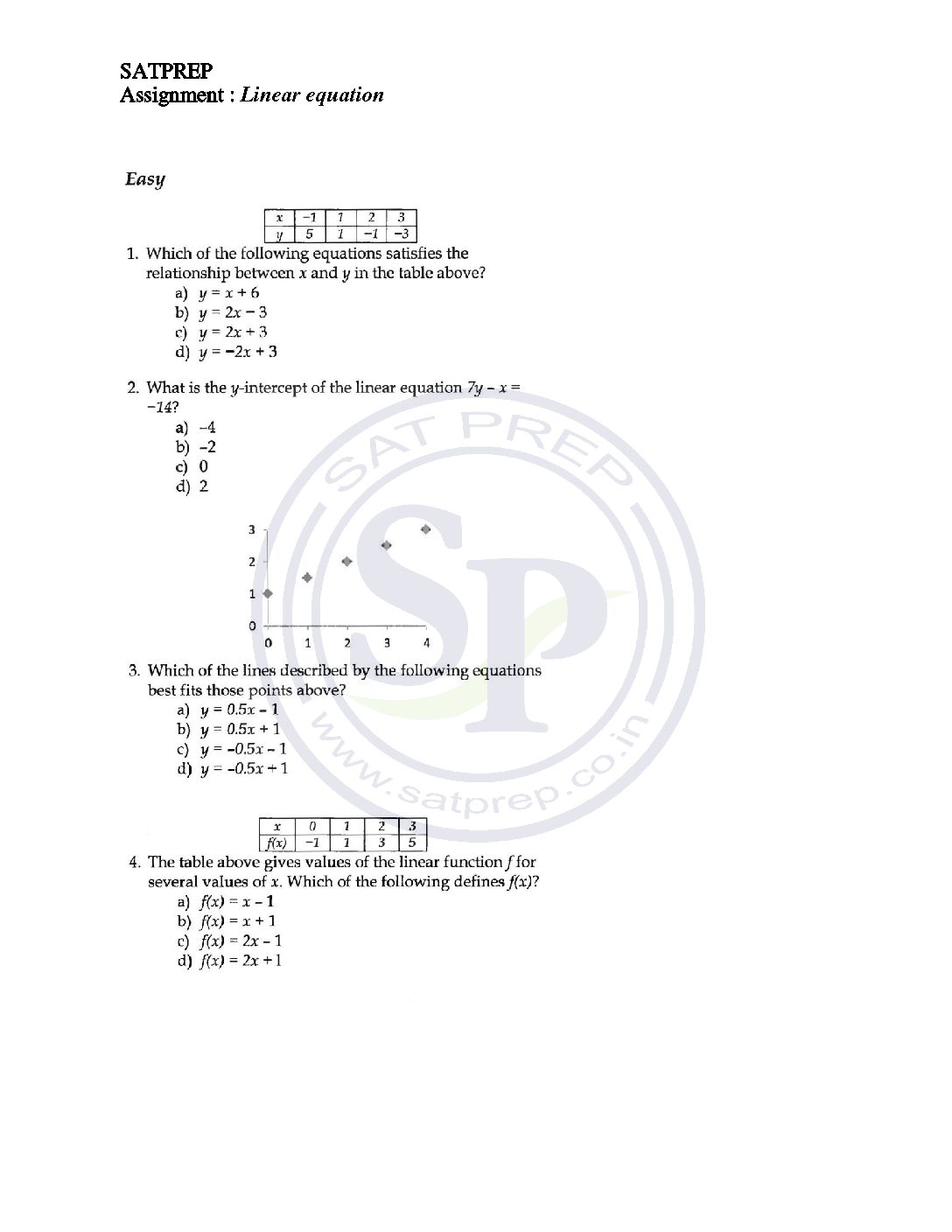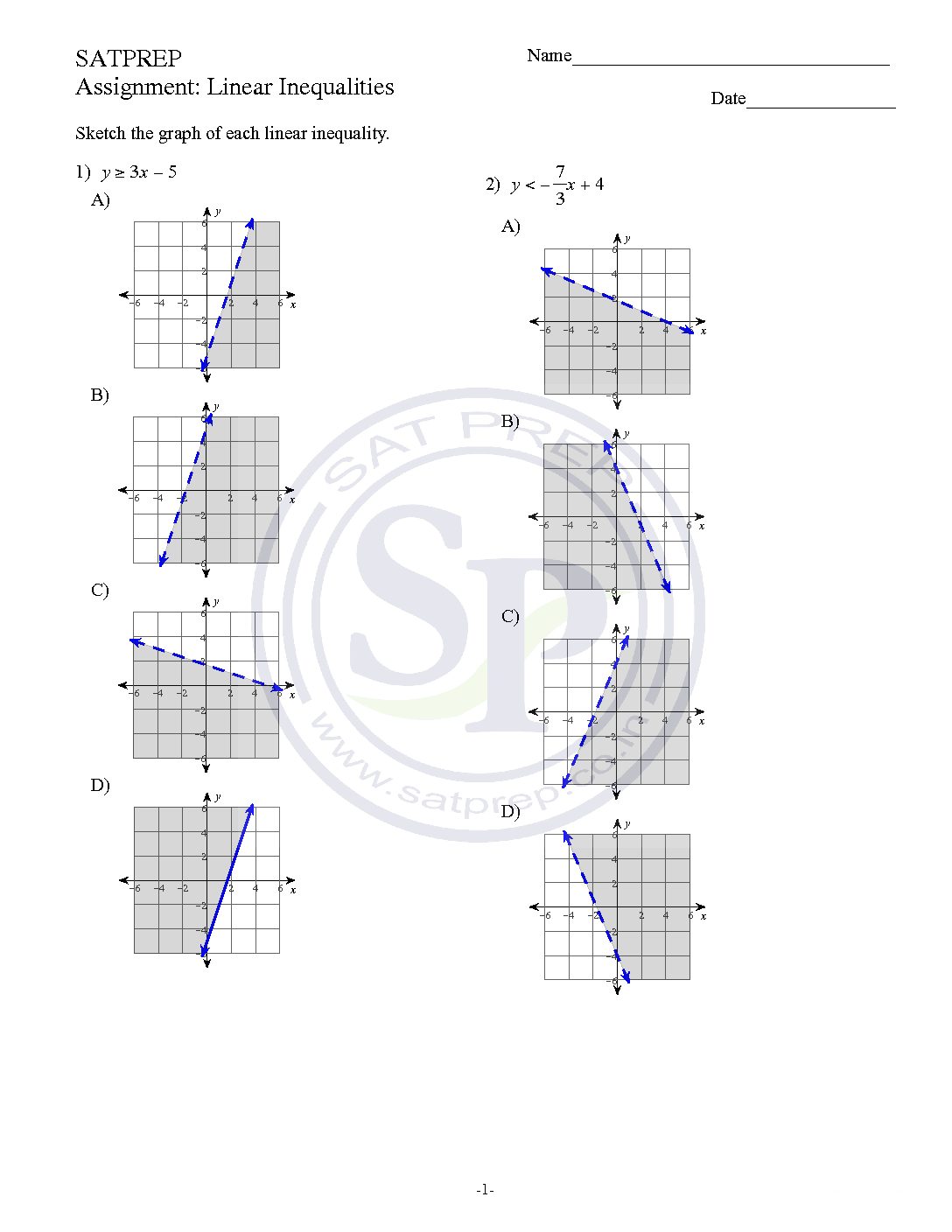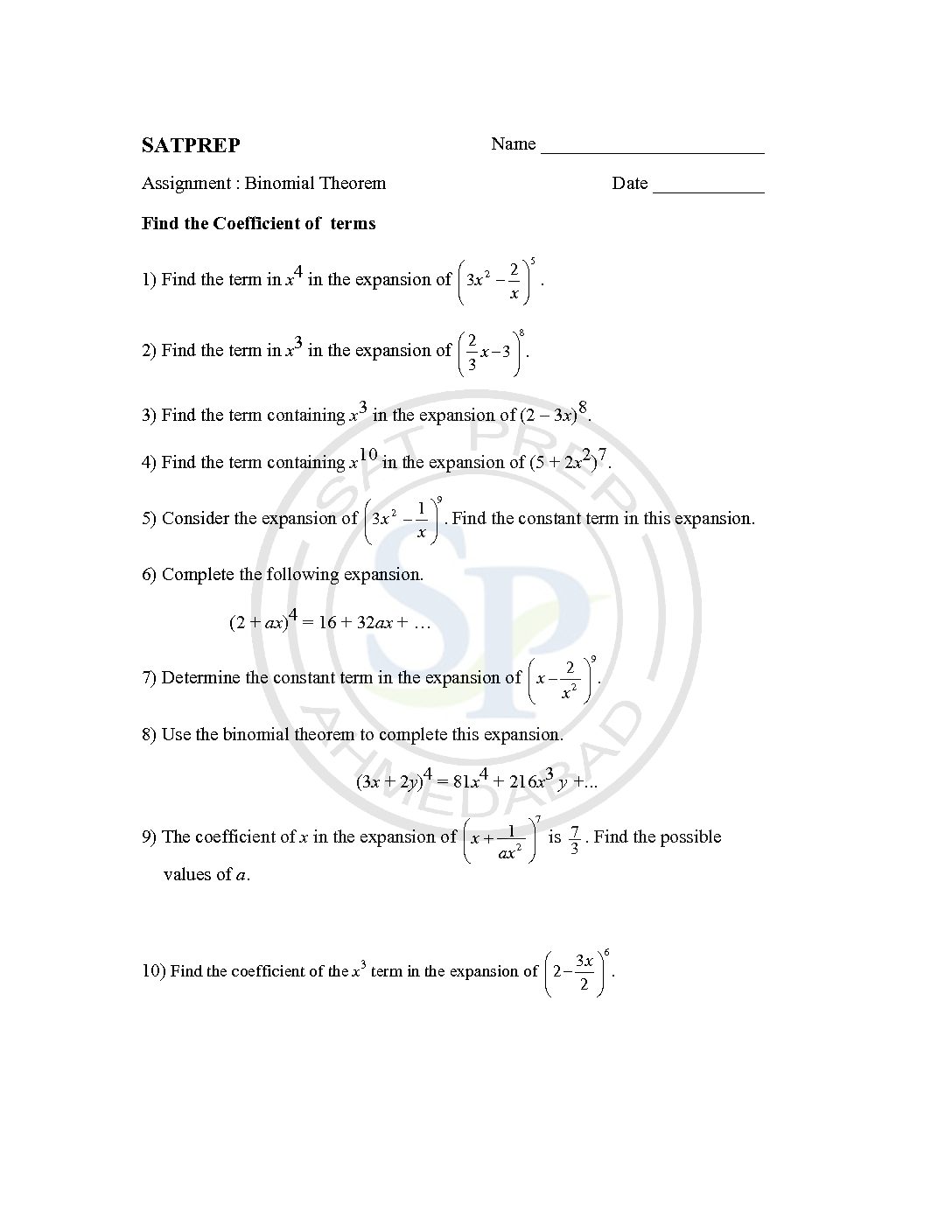You are browsing archives for
Tag: SAT math
Rate Problem-Lecture-17
Ratio, Proportion and Rate-Lecture-15
A rate is a ratio that compares two different kinds of numbers, such as miles per hour or dollars per pound. A unit rate compares a quantity to its unit of measure. Ratio Proportion and Rate
Percentage- Lecture-13
a percentage is a number or ratio that represents a fraction of 100. It is often denoted by the symbol “%” . Also When we say “Percent” we are really saying “per 100”. One percent (1%) means 1 per 100. Hence Use the percentage formula: P% * X = Y. Percentage
Linear functions-Lecture 12
Two variable linear functions are those whose graph is a straight line. A linear function has the following form. y = f(x) = a + bx. A linear function has one independent variable and one dependent variable. The independent variable is x and the dependent variable is y. Linear functions
Heart of Algebra
Algebra is a branch of mathematics dealing with symbols and the rules. Therefore we can say equation is relationships between variables. Algebra
Heart of Algebra
In SAT heart of algebra consists of questions that will test your ability to analyze also solve linear equations and systems of linear equations. Algebra also consist of framing equation from language. Hence algebra include all related with variable. Heart of Algebra
Solving A Linear Equation-Lecture-5
A linear equation is any equation that can be written in the form : ax+b=0 If a=ba=b then a+c=b+ca+c=b+c for any cc. All this is saying is that we can add a number, cc, to both sides of the equation and not change the equation. If a=ba=b then a−c=b−ca−c=b−c for any cc. As with the […]
Linear inequality
A System of Linear Inequalities is the set of two or more linear inequalities which are having same variables. The graph of an inequality in two variables is the set of points. Hence solution of inequalities is get by graph.Further we plot linear inequalities on graph. Therefore the overlap area will be solution of inequalities. Inequalities […]
Binomial Theorem
When a binomial is raised to whole number powers, the coefficients of the terms in the expansion form a pattern. Each expansion has one more term than the power on the binomial. The sum of the exponents in each term in the expansion is the same as the power on the binomial. www.kutasoftware.com
